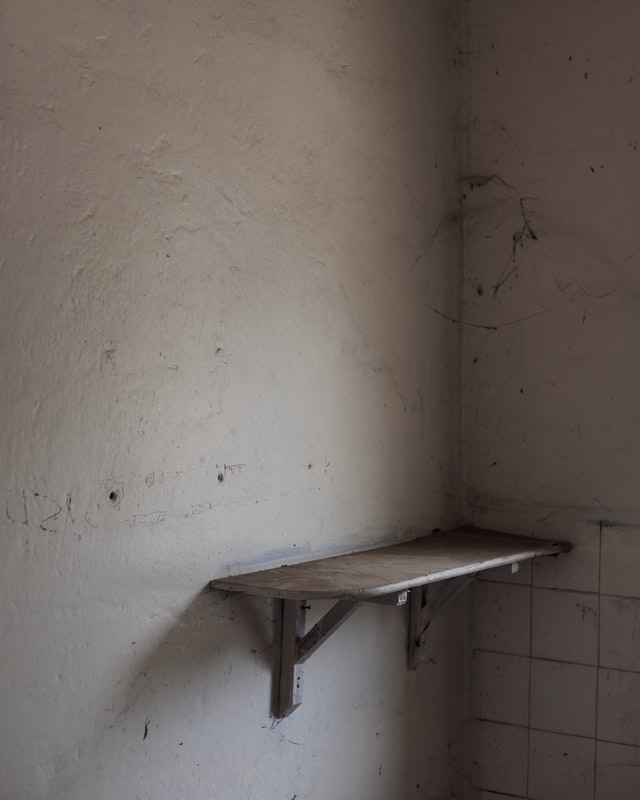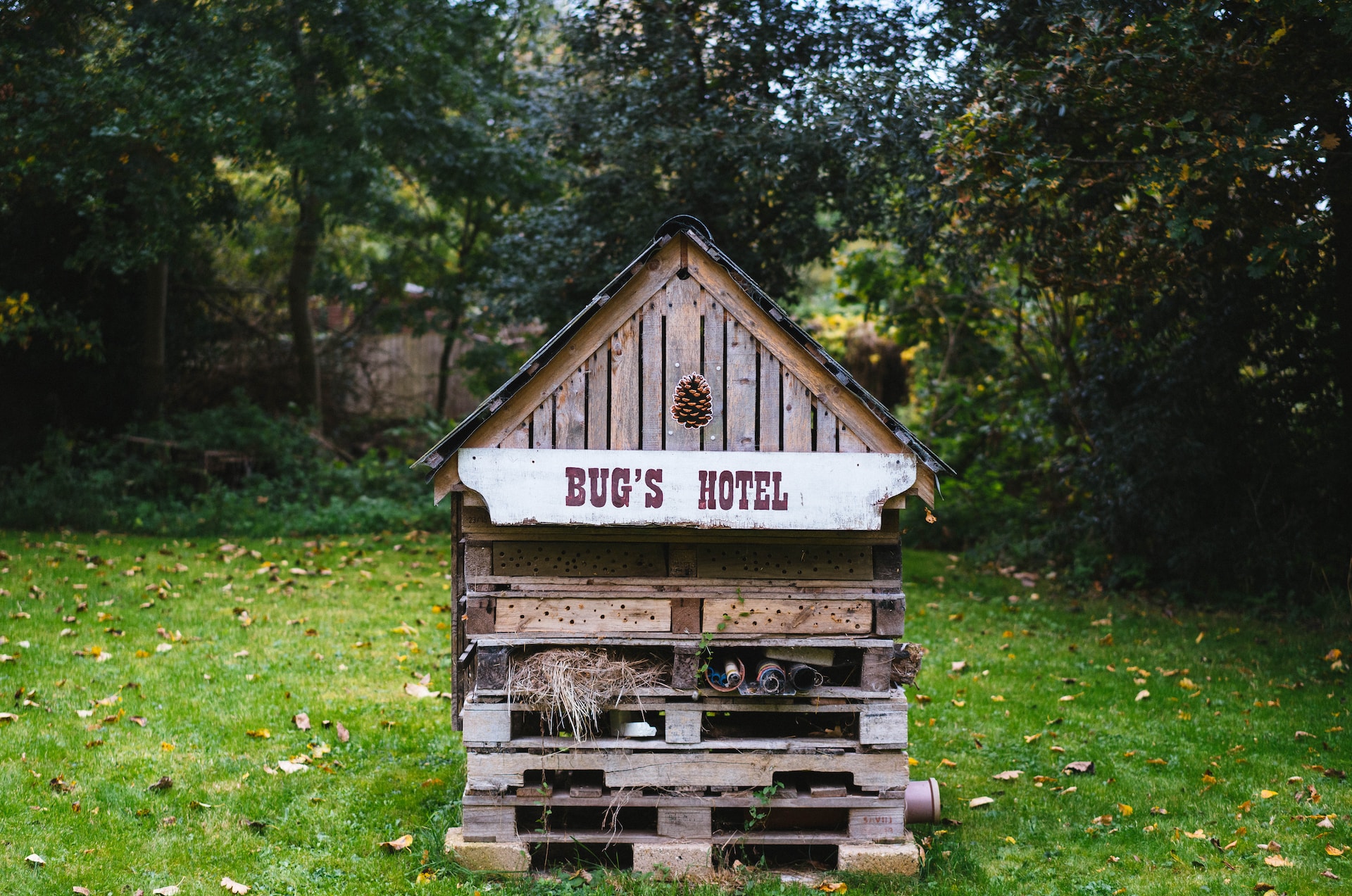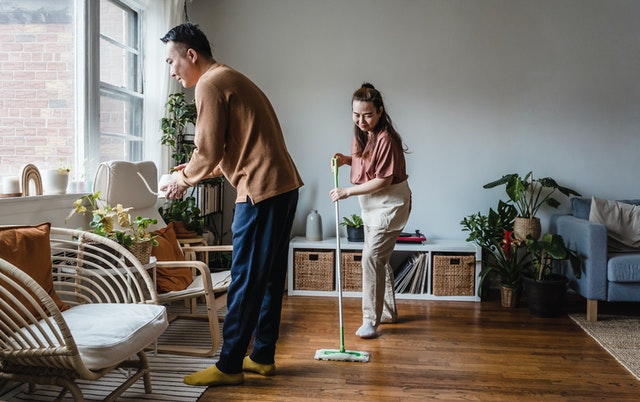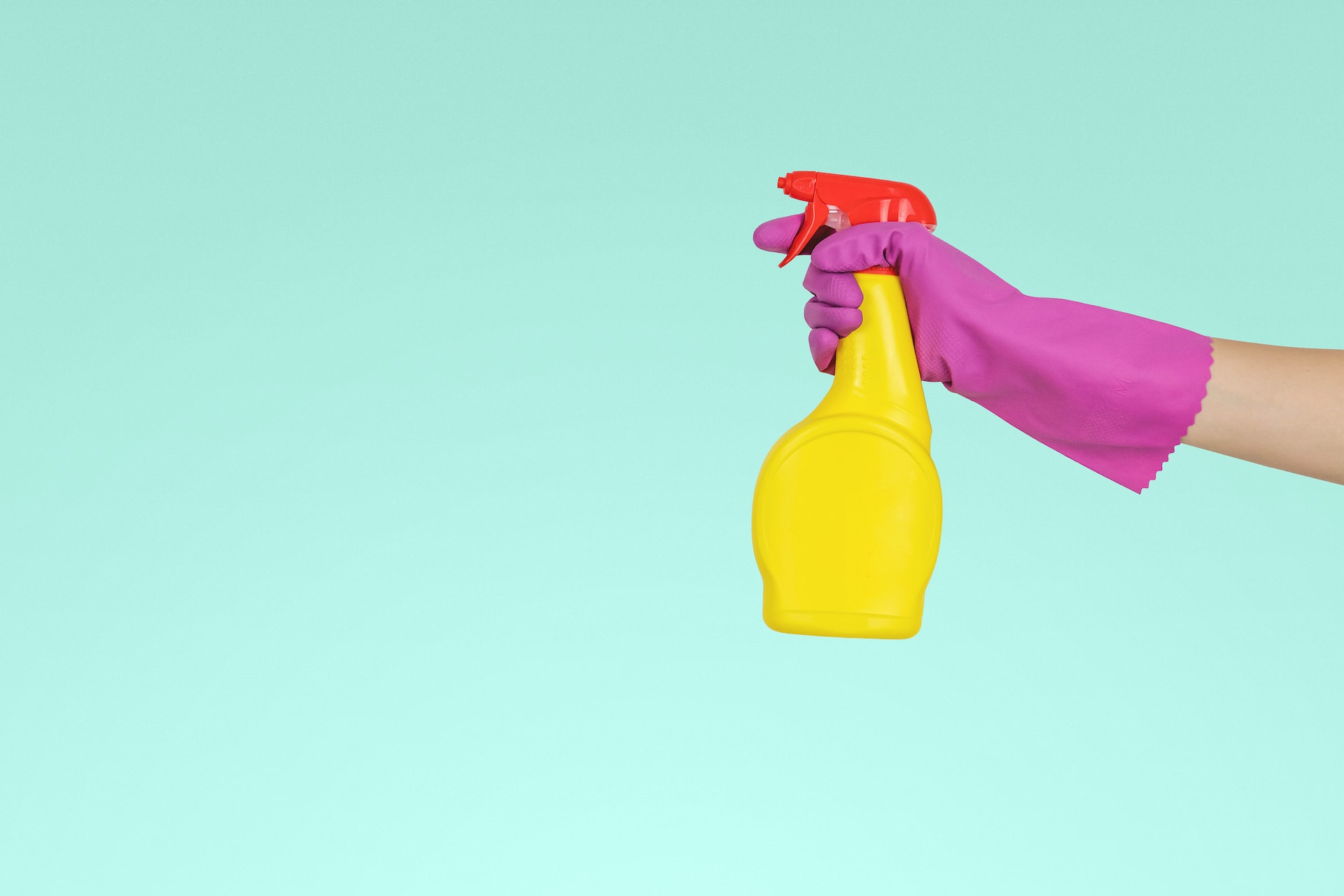Ghosting on your walls and ceilings can be both unsightly and troublesome to look at, especially if you can’t distinguish between mold and ghosting.
While this can be worrying, ghosting is extremely common in houses with poor wall insulation, ventilation systems, excess moisture, and standard dust and debris. There are some tried and tested ways to remove wall and ceiling ghosting, depending on whether you need an immediate fix or a permanent solution.
To help you get back to bright and even walls and ceilings. This article discusses what wall ghosting is and its causes, how to distinguish between mold and ghosting, and how to clean ghosting on a temporary and permanent basis.
What does ghosting on walls mean?
Before discussing the specifics of wall ghosting, it’s essential to determine what wall and ceiling ghosting stains are. Wall and ceiling ghosting or thermal tracking stains refer to dark spots or dark streaking and black colors that appear after dust, dirt, soot staining, or grease build-up.
Ghosting is called such due to the mysterious stains on walls that appear out of nowhere and typically go unnoticed as they blend into the walls. Over time, they become more noticeable as the root cause goes untreated.
Getting rid of ghosting marks can be difficult as these stains can be unexplainable at first. Understanding the exact causes of ghosting can help you remove the source and rid yourself of tracking stans for good! However, there are several reasons why ghosting on walls and ceilings occurs.
What causes ghosting on walls and ceilings?
The causes of ghosting can vary, making it hard to pinpoint the source and treat the issue. The cause of your ghosting will depend on how well insulated your home is, the climate, what types of candles you burn, whether you use air conditioners, and much more. To help, here are the most common causes of ghosting stains in your home:
Bad insulation
Having inadequate insulation can wreak havoc in your home in several ways, but this can contribute to the ghosting stains on your wall. Insufficient insulation allows cold air to pass through your wall, creating condensation.
While this condensation isn’t usually a problem, if left untreated, the air current and moisture attract dust and dander particles from the air, causing them to stick to the moisture. You might not immediately notice this, but this can build up, causing the dark thermal tracking stains known as ghosting.
Bad insulation refers to not enough gaps or missing insulation that allows the free flow of cold air from the outside. There should never be any gaps in insulation as this can stop your home from regulating its temperature, allowing condensation to sit and lead to mold.
Dust, debris, and black soot particles on walls
Believe it or not, there is a lot of dust, dirt, and dander floating around you. This is entirely normal and even occurs in the cleanest of homes. However, leaving this to accumulate can lead to this dirt gathering onto the walls and collecting over time.
This is especially prevalent in humid homes, where dust and dirt attach to the moisture in the air and stick to surfaces like walls and ceilings.
Burning combustible liquids
Incense, oils, and fragrances can be an excellent addition to the home. Burning candles and oils can lead to considerable ghosting stains on walls. Still, without proper ventilation or space between the wall and the burning, vapors will collect and form unsightly dark stains around your home if burnt too often.
If you have recently had a grease fire, you may notice ghosting on the walls surrounding the affected area as vapors rise and cling onto the wall.
Poor HVAC systems
While heating, ventilation, and air conditioning systems are a must for many homes, maintaining them is critical to ensuring they work for longer and don’t begin to impact your home.
Poorly maintained HVAC systems can leak and cause excess moisture in the air, leading to ghosting or thermal tracking stains. Air filtration systems need frequent cleaning to ensure indoor air quality and reduce the chances of thermal tracking on walls.
Ghosting vs. mold growth
One of the main concerns of tenants and homeowners is deciding whether the dark spots on their walls are mold or ghosting. It’s essential to determine the difference between these maintenance requests, as ghosting is typically surface stains and doesn’t threaten your health.
In contrast, mold growth can threaten your respiratory health and requires different treatments and preventative care. The tricky bit when deciding whether it’s ghosting or mold is that both have similar causes.
For property managers, using client management software can improve the process of addressing tenant concerns related to mold and ghosting. Efficient tracking of maintenance requests helps prevent long-term property damage.
Ghosting manifests in neat and straight lines or patterns that correspond with airflow, condensation, or lack of insulation. The pattern is the biggest clue in deciding whether it’s ghosting or molding. The best way to determine this is by enlisting the help of a home inspector who can use a thermal imaging camera to determine the location of missing insulation.
Mold growth usually has a little brown spotted pattern and can appear in dark blocks with a bit of diffusion in color. However, suppose you notice spots or stains on the walls. In that case, you should find out about the condition of your insulation, as this can lead to thermal tracking ghosting and mold.
Similar to removing ghosting from walls, mold removal will usually need a combination of interior and exterior repair solutions.
What will I need to clean ghosting on my walls and ceilings?
To clean ghost marks yourself, you’ll need several tools. Here is a guide to what you will need:
- Bleach.
- Water.
- Rubber gloves.
- Colored towels.
- Paint.
- Primer.
How do you clean ghosting on walls and ceilings?
How you clean your walls will largely depend on whether you need a temporary fix to get rid of unsightly ghost marks or whether you’re ready to invest in additional help to identify the causes and clean ghosting on the walls for good. Here is a guide to both a temporary and permanent cleaning and repainting of ghosting:
Temporary fix
Suppose you’ve recently placed your home on the housing market and are ready to conduct viewings. In that case, you may need a quick solution to stage your home and attract a potential buyer. Otherwise, if you would like to rent out your property you may need to attract potential tenants for your apartments for rent.
It’s important to note that this won’t fix thermal tracking ghosting in the long run, as you’ll need to remove and treat the source and conduct cosmetic repairs. You can follow these steps to improve the look of your home:
1. Scrub the area with wall cleaner or detergent
You can use a solution of diluted bleach and water while scrubbing the area to remove the appearance of dark or grey marks. Try not to use too much bleach, as this can damage the paintwork. You can also use specialist wall cleaning agents or enlist the help of a cleaning company that will know which chemicals and cleaning products are safe to use on walls.
This is also useful for cleaning any mold spores beginning to form. Again, try not to use too much bleach, which can cause respiratory problems. Remember to wear rubber gloves to avoid irritating your skin.
2. Dry with colorless towels
Before repainting the walls, you’ll need to ensure that the area is dry and free from excess moisture. This is important to ensure that any repainting over thermal tracking dries quickly and doesn’t collect more dust or dirt particles.
3. Once dry, use paint primer
Once the area is completely dry, you should use paint primer before painting over the area. Once this is complete, pick a slightly darker color than the original paint to paint over the soot or dark marks. This will help disguise the problem while addressing issues in the interior walls and ceilings.
Permanent fix
You’ll need to follow these steps to fix thermal tracking ghosting permanently:
1. Remove the cause of the wall ghosting
While this sounds very vague, you need to find the source of the moisture or dirt that causes the thermal tracking; otherwise, it will continue returning no matter how many times you fix the cosmetic part of the issue.
2. Conducting regular home maintenance
Ensure that your insulation has no gaps, your exhaust fans are working, and enlisting the help of a contractor to diagnose the issues with the interior wall is one of the only ways to remove ghosting stains permanently.
3. Use a bleach solution
Once you have found the cause and conducted any repairs, you can use a bleach solution, dish soap, or toothpaste solution to remove the dark stains. Ensure that the product you use will not damage the wall or paint.
4. Remove all excess moisture
Again, removing all excess moisture is essential to avoid attracting dirt particles. Use a colorless towel to reduce transfer and pat the area dry to do this. This will also help you achieve a smoother finish after repainting the wall.
5. Use a cleaner to wash the wall several times
You might need to persevere with the cleaning process, especially if the dirt and dander build-up has been left to accumulate for several years. This will come off eventually, but you may need to conduct several cleanings over a few days to achieve the desired outcome.
Can I reduce the chances of ghosting stains on my walls and ceilings?
In short, yes, there are several steps that you can take to reduce the chances of having ghost marks plague your home. However, this involved frequent maintenance and ensuring that you don’t use chemicals or liquids that contribute to the build-up of ghosting on the walls. Here are some ways you can stop ghosting:
Limit your use of candles and combustible liquids
Candles and greasy combustible liquids are one of the leading causes of ghosting stains due to the particulates and vapors released into the air after burning.
Improve your insulation
Improving your attic insulation or having your insulation replaced will help to stop cold spots, air leaks, and air movement from causing ghosting streaks. This also has several benefits, including reducing heat loss in the winter without using too much heat, which causes your energy bills to skyrocket.
Reduce the humidity in your home
Humidity is the cause of several problems within the home, such as dampness and molding. It would help reduce your relative humidity by ensuring that your home is adequately ventilated.
Use a bathroom extractor fan to get rid of excess moisture when using a shower or bath. Open windows around your home if you live in a damper climate that increases the humidity in your home.
If you don’t live in a colder climate, ensure that there are no leaks, such as roof leaks, that could be contributing to higher humidity in your home. Doing this can also help prevent mold and mildew build-up that can contribute to or exacerbate several respiratory illnesses like asthma.
Reducing the humidity in your home also means taking care of any water damage that could be contributing to condensation in your home.
Don’t smoke inside
Cigarette smoke contains several harmful chemicals that can build up your walls and cause ghosting and yellowed stains. Try to smoke outside if you have to, or ensure that you’re in a properly ventilated area where smoke can escape and not stick to the walls.
Leave big enough gaps between the walls and clothes dryers
As we’ve discussed, ventilation is crucial. Ensuring that condensation doesn’t build up on your walls is essential to reducing the chances of ghosting on your indoor wall or ceiling.
Provide enough space between your clothes dryer and walls when drying inside. This helps to increase ventilation and stops condensation from gathering on the wall and attracting dirt particles.
Here are some other ways to reduce ghosting on walls:
- Remove dirty welcome mats by your front door or on your porch.
- Open your windows and doors frequently.
- Ensure there’s enough ventilation by gas furnaces, friers, and stovetops.
- Frequently measure your indoor humidity.
- Have home inspections of your wall cavity and ventilation systems, and heating systems.
- Limit pet dander if you can.
- Clean your air filtration system of dust particles and dirt.
- Check the water levels in your sump pump to see if this is causing the excess moisture.
To find out more about how you can improve your home, check out Porch’s advice section for tips and tricks on home remodeling and interior design.




